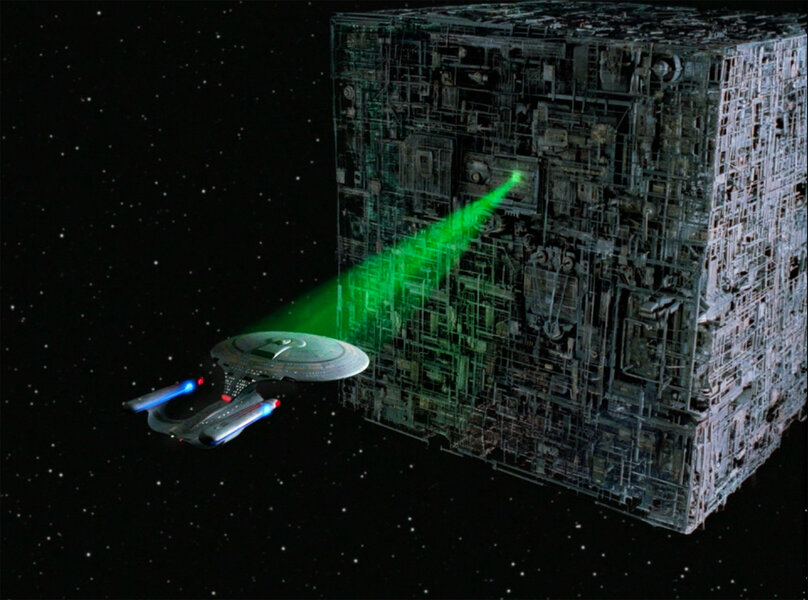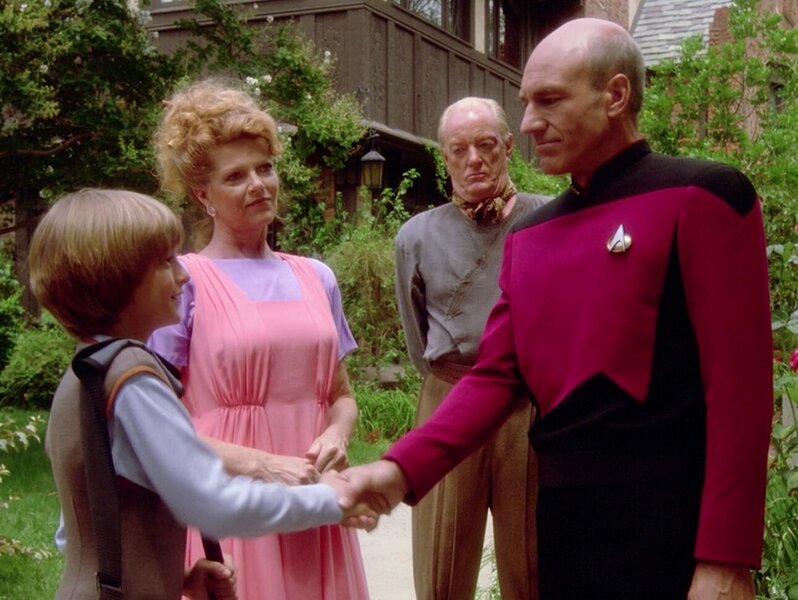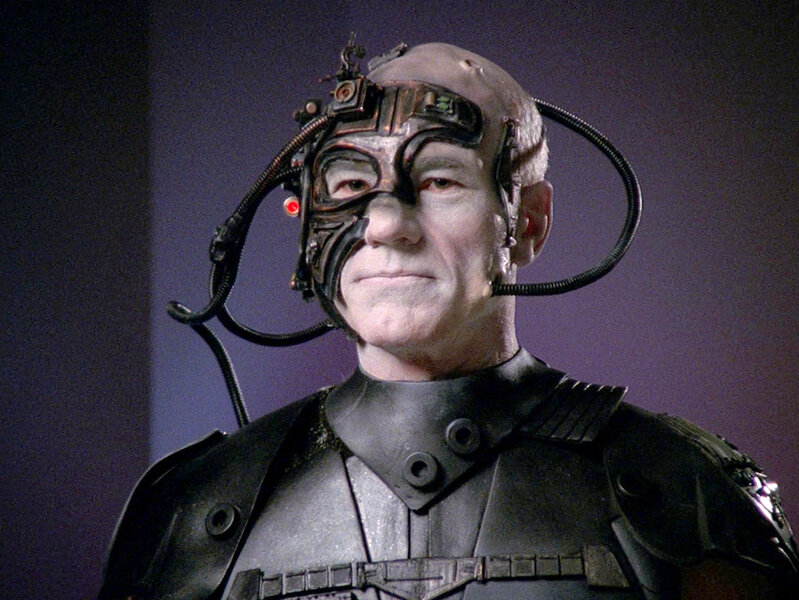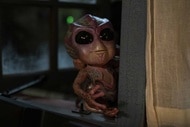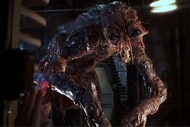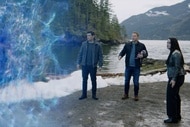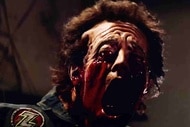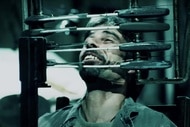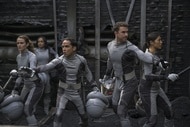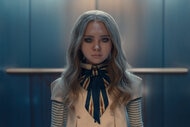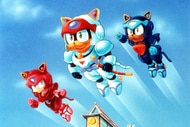'Make it so': Star Trek: The Next Generation's 25 best episodes, ranked
These are the best adventures of Captain Picard's TNG crew.

No one expected Star Trek to last longer than the original series’ first three seasons, let alone 55 years.
Even by 1960s standards, the classic show suffered from low-budget sets and, at times, cheesy effects. But what it lacked in spectacle it made up for with ideas; a thematically-rich exploration of heady sci-fi concepts bolstered by occasional space-based action and some of the finest TV characters ever assembled. Trek’s legacy would endure and spawn 13 feature films and several series, most notably Star Trek: The Next Generation, which is as popular now (or more) than it has ever been, thanks to streaming. In 2021, TNG celebrate some significant milestones: The 30th anniversary of the Season 5 episode "Disaster," Trek's take on disaster movies like The Poseidon Adventure, the 30th of "Unification, Parts I and II, which marked Mr. Spock's return to television prior to the theatrical release of 1991's Star Trek VI: The Undiscovered Country, and Star Trek: First Contact recently turned 25.
With everyone coming up Star Trek: The Next Generation lately, as well as the franchise itself celebrating its 55th anniversary this year, SYFY WIRE scrolled through our databanks to rank and file the 25 greatest episodes of TNG.
25. “Q Who?” (Season 2)
The Borg have never been more scary than they are in “Q Who?”, their first appearance in Star Trek.
When Q is denied a spot amongst Picard’s crew, he punishes the captain’s perceived short-sightedness by snapping his fingers and sending the Enterprise to the unexplored reaches of the Delta Quadrant. There, Picard encounters — and barely escapes — the Borg and their relentless pursuit of perfection by means of assimilation. The moment their cube vessel cuts out a section of the D’s saucer as easily as one would carve a roast, the Borg instantly shot past the Klingons as Star Trek’s most lethal adversary. Our introduction to the Borg is both bleak and dark, which gives the episode a slow burn, almost haunted house movie-type feel thanks to future X-Files director Rob Bowman’s dread-filled visual style. For the first time on Star Trek, you don’t know how or if the crew will get out of this one. The tension therein makes for one hell of an episode.
24. “The Next Phase” (Season 5)
“The Next Phase” is further proof that, when it comes to delivering high-concept entertainment, no Trek show did it better than The Next Generation.
With a plotline rich enough to sustain an entire feature, “Next Phase” pairs the conflict-heavy Ensign Ro (Michelle Forbes) with LeVar Burton’s Geordi LaForge on a mission to free themselves from being phased out of reality before Romulans destroy the Enterprise. Forbes and Burton’s committed performances help ground the out-there premise as the sci-fi complications build to a race-against-time conclusion that is so satisfying, you might catch yourself applauding in approval.
23. “Ensign Ro” (Season 5)
Season Five’s “Ensign Ro” had the unenviable task of introducing the episode’s titular recurring character as means to tee up the Star Trek: Deep Space Nine spinoff. While more plot heavy than usual TNG episodes, Michael Piller’s teleplay delicately balances out the exposition with essential character development scenes between the infamous Ro Laren and her new captain, Picard.
When we first meet the Bajoran Ro, everything about her says “stay away.” Her rebellious Starfleet record precedes her when she first boards Enterprise, which leads to instant friction between her and Riker as Picard recruits Ro for a mission that concerns her people and their enemy, a Nazi-like occupational force known as the Cardassians. Ro quickly became a fan-favorite, thanks to Forbes’ sympathetic and charming performance in what would become a load-bearing episode for the franchise’s expansion in the ‘90s.
22. “Brothers” (Season 4)
This Season 4 entry fleshes out Data’s backstory with a one-man show for Brent Spiner as he plays three different characters: Data, his very old creator, Dr. Noonien Soong, and Data’s very evil brother, Lore.
After Data inexplicably orchestrates a fake disaster aboard the Enterprise and takes control of the ship’s computer, he confronts both the father he thought was long lost and the brother he can’t seem to lose. Soong wants to give Data an emotion chip, to finish what he started before he dies, just as Data’s family reunion jeopardizes the health of a young boy under Dr. Crusher’s care. If Data doesn’t relinquish control of the Enterprise, this kid will die and his brother will suffer from a lifelong case of survivor’s guilt. Looking past the fact that “Brothers” confusingly avoids dealing with any serious questions surrounding Data’s selfish and potentially deadly actions, the episode serves as an extended Emmy reel for Spiner. He effortlessly dons old age makeup and switches between three generations of Data’s family line in what is a definitive moment in the android’s arc.
21. “Deja Q” (Season 3)
The second best of Q’s visits to the Enterprise, “Deja Q” is a brilliant elevator pitch — what if Q lost his powers — executed to its richest and most dramatically satisfying potential. Stripping Q of his omnipotence gives the mischievous a newfound sense of vulnerability and humility, one he only previously experienced when observing the subjects of his torments. While Q’s appreciation for what it means to be human is brief, it gives John de Lancie interesting opportunities to invest his iconic baddie with more nuance as Q goes from selfless to selfish in this entertaining (and very meme-friendly) outting.
20. “Reunion” (Season 4)
Worf-centric episodes of TNG like “Reunion” or “Sins of the Father” are to Star Trek what the last two Captain America movies are to Marvel: World-building game changers. “Reunion” pushes major plotlines whose consequences will eventually ripple effect throughout the next three decades of Star Trek, as Worf’s personal vendetta against his rival, the Duras family, brings more intrigue to the Enterprise and tragedy to our favorite Klingon.
It also pushes Worf into a relationship with his estranged son, Alexander, as the two must learn to live together when a conspiracy that threatens to tear the Klingon Empire apart results in the death of Alexander’s mom and Worf’s over, K'Ehleyr (the scary-talented Suzie Plakson). The mystery plot here clicks into place like safe tumblers, but “Reunion” truly excels in the moments spent with Worf as his obligations as a Starfleet officer get in the way of his code as a Klingon warrior. Especially when, during one of Trek’s darkest moments, Worf exercises his right to avenge his one true love by straight-up murdering her dishonorable killer.
19. “The Drumhead” (Season 5)
As bottle episodes go, they don’t get much better or more powerful than “The Drumhead.”
It’s The Crucible on the Enterprise as Picard spars with one of the Federation’s legendary legal minds and investigators when she suspects there is a Romulan conspiracy taking root on the flagship. The circumstances surrounding her suspicions achieve Red Scare-levels of paranoia as TNG puts McCarthyism through a revealing and unyielding sci-fi lens to tell a very timely story of how far people will go to find the truth — even if it means fabricating a version of it.
18. “Lower Decks” (Season 7)
Before the comedic adventures of the animated Star Trek: Lower Decks, Star Trek’s first attempt to explore the lives of the rank-and-file officers aboard a starship occurred in “Lower Decks,” one of the few standout episodes from the underwhelming Season 7.
“Lower Decks” devotes most of its screentime to a small group of pals who aspire to be on the Enterprise bridge or among the senior staff’s away missions. They soon end up in “be-careful-what-you-wish-for” territory when Picard plucks one of the young officers, the Bajoran Ensign Sito (Shannon Fill), to help him execute a dangerous mission involving the Cardassians. “Lower Decks” acts as a pseudo-sequel of sorts to “The First Duty,” where Picard first encountered Sito during a court martial that tarnished the then-cadet’s career before it started. Her chance at redemption via Picard’s mentorship gives the episode its beating heart, which ultimately breaks ours in the final moments when this earnest officer we’ve been rooting for becomes another casualty under Picard’s command. With this final dramatic twist, “Lower Decks” goes from a welcomed departure from TNG’s usual story template to one of the show’s most effective episodes.
17. “The First Duty” (Season 5)
Wesley Crusher continues to give Picard more headaches than anyone is worth, but at least this time it results in a standout episode of Trek.
Ron Moore’s attempt to do A Few Good Men, Star Trek-style, centers on Crusher and his fellow cadets. On the eve of their graduation from Starfleet Academy, they find themselves in the middle of a tribunal that intends to get to the truth behind why their friend and fellow cadet, Josh, died during a flight exercise. The lies Wesley and his friends tell to escape justice only puts them under more scrutiny when Picard goes digging around the shady circumstances surrounding Josh’s death. That search yields a show-stopping scene between Picard and Wesley, with one hell of a monologue that still gives us chills. “The First Duty” adds some much needed depth and ethical greys to Wesley’s squeaky-clean image, while also affording TNG the rare chance to challenge its “perfect” utopia by proving that even the best of us can succumb to our lesser angels.
16. “The Defector” (Season 3)
“The Defector” is another exceptional episode from (shocker) writer Ron Moore, which puts a Romulan defector front and center with tragic consequences.
This defector, who Picard struggles to believe is just some low-level officer, risks never seeing his family again in an effort to save his people and Earth’s from what appears to be another costly war brewing between the two adversaries. In the course of vetting the defector’s statements, Picard finds more questions than answers. That investigation comes with one hell of a gut punch: Eventually, the Romulan officer realizes his people betrayed him. They used him as bait, leaking somewhat false information as a way to test his loyalty to the Empire and gleam intelligence off Starfleet’s response to their partial ruse. “The Defector” is a powerful tale of one man’s journey from brave hero to duped traitor, with a mystery plot that keeps audiences at the edge of their seats as the final scenes send them reaching for some tissues.
15. “Disaster” (Season 5)
Designed as an homage to classic disaster movies like The Poseidon Adventure, Ron Moore’s underrated “Disaster” gives the Enterprise the Irwin Allen treatment when the starship is crippled after a collision with two quantum filaments (think space potholes). With the ship powerless and adrift, “Disaster” splits up the crew and mines their individual crises for maximum tension by putting these characters outside their comfort zone or into conflict-rich pairings. For example, an injured Picard is forced to help and work with people he normally can’t stand, children, while Counsellor Troi finds herself both in command and way over her head as her inexperience clashes with that of the better-trained Ensign Ro. “Disaster” is the rare Trek outing with no moral or lesson to learn, just good ol’ fashioned, keep-the-plates spinning tension that is just as rewatchable as the epic movies that inspired it.
14. “Relics” (Season 6)
The Next Generation thankfully loosened up on its “no classic Star Trek actors” guest star policy for Season 6’s “Relics,” a thrilling episode written by Ron Moore that brings James Doohan’s Scotty into the 24th Century.
Prior to Scotty, only McCoy and Spock mingled with Picard’s crew, but Scotty’s episode arguably makes the best use out of revisiting these iconic characters. Here, Scotty struggles with being a man out of time and a fish out of water when he is thrust into a conflict of engineering styles with Geordi as the two must work together to free the Enterprise-D from the massive confines of a Dyson sphere. The episode spends considerable time contrasting the two engineer’s styles, giving Doohan more meaty acting moments in this one hour than any episode or movie did before. Scotty, accustomed to saving the day and with plenty of old war stories to prove it, quickly realizes he’s less of an asset on this Enterprise and more of a has-been. He begins to find his place and relevance once again by sharing a drink with Picard on the bridge of The Original Series’ Enterprise (albeit a holodeck recreation of it).
“Relics” wisely invests Scotty with a rich exploration of what would really happen if one of the 23rd Century’s most famous heroes finds himself questioning his usefulness in the 24th Century. Moore’s script uses one Trek icon to push and challenge his TNG equivalent, giving fans one of the show’s most exciting adventures.
13. “Chain of Command, Parts I & II” (Season 6)
“Chain of Command” is arguably TNG’s darkest hour, and one of its most thrilling. This two-parter kicks off with one of the shortest teasers in Trek history: Captain Picard loses command of the Enterprise when Starfleet re-assigns him to lead a Black Ops-esque team on a mission deep into enemy territory. That enemy? The Cardassians. Picard’s job is to find out if these baddies are creating a deadly bio-weapon and but his mission goes sideways; he is soon captured and tortured as a POW by a sadistic Cardassian (David Warner) as Riker bristles against the brash command stylings of Picard’s replacement, Captain Jellico (RoboCop’s Ronnie Cox.)
The second half of this intense storyline is the strongest and most memorable for fans, as it features the infamous “There are four lights!” interrogation scene. Here, a gaunt and delirious Picard combats his captor’s psychological torture as the Cardassian gaslights Picard into submission by promising him freedom if Jean-Luc will admit he sees five lights when there are only four. This battle of wills is fraught with more tension than any space battle could muster, as “Chain of Command” provides a sobering dose of political commentary by tackling the issues of war crimes and genocide in ways only Star Trek could.
12. “The Wounded” (Season 4)
The first appearance of the villainous Cardassians (complete with their funky and quickly-abandoned head gear) is Star Trek: The Next Generation’s sci-fi take on Coppola’s Apocalypse Now. Only instead of venturing “up river” to terminate a rogue colonel, Picard and Chief O’Brien (Colm Meany) are forced to work with “the bloody Cardys” in pursuit of O’Brien’s former captain, Maxwell (Shawshank Redemption’s Bob Gunton). Maxwell has seemingly gone rogue, using his starship to attack what appears to be non-military Cardassian targets.
O’Brien, having fought the Cardassians during a violent war years ago, must grapple with his hate and his duty in an episode that gives the supporting character his first real dramatic showcase. When O’Brien finally has some alone time with the cornered and defeated Maxwell, “The Wounded” earns its namesake as the two sing a melancholic song after sharing war stories of comrades lost that Maxwell’s vengeful PTSD can’t ever bring back. This haunting scene tugs on the heartstrings moments before Picard discovers that the supply ships Maxwell attacked were indeed part of Cardassian efforts to re-arm themselves. It is a revelation that validates Maxwell’s career-ending crusade while also giving the episode one of Trek’s most bittersweet finales.
11. “The Offspring” (Season 3)
Data’s earnest endeavors to be more human reach a turning point in “The Offspring,” an emotionally-charged episode of TNG where Data creates his daughter, Lal.
Just as the android bonds with his child, a veteran Starfleet admiral arrives on Enterprise threatening to pull them apart when he challenges their right to be a family at all. Star Trek: TNG often finds success in exploring Data’s humanity
through the lens of the very humans who would try and take it away from him. “The Offspring” offers an excellent and tearful portrayal of that conflict as the crew comes to their friend’s aid just as Lal suffers a life-threatening issue. It’s a five-boxes-of-tissues affair when Data and the admiral work offscreen to save Lal. No matter how fast Data’s hands move, they fail to prevent Data from having to learn the hardest of humanity’s lessons: Loss.
10. “Measure of a Man” (Season 2)
Real talk: Star Trek: The Next Generation’s first two seasons are noble misfires. Their weekly installments have more lows than highs, but one of the few outstanding hours from the series’ early days is the Data-centric “Measure of a Man.”
When another jerkoff Starfleet scientist comes looking to dissect Data to see what makes him tick, Picard must defend his officer’s sentience in court, and settle once and for all if this android is indeed alive or merely Federation property. The stakes couldn’t be higher — Data either gets to live on the Enterprise or under a microscope — and the drama that unfolds from this classic Star Trek premise is riveting. “Measure of a Man,” Melinda M. Sondgrass’ first writing credit for the show, is full of great dialogue and speeches that spark numerous ethical debates: Who is Starfleet to say that Data is sentient or not? Is their mission to explore new life or to play God when they find it? “Measure” never shies away from debating such topics, which have always been at the heart of Star Trek. It all builds to Picard’s passionate, climactic defense in favor of his colleague and friend — a scene that ranks near the top of Patrick Stewart’s long list of great acting achievements.
9. “Darmok” (Season 5)
Picard’s diplomatic skills are put to the test in “Darmok,” when he is taken against his will and paired with an alien commander who only communicates via metaphor. This “only-on-Star-Trek” premise offers a potential minefield of narrative obstacles that could easily derail the drama in their execution, but Joe Menosky’s exceptional script for this Season Five episode pulls it off effortlessly.
Picard, stranded on a mysterious planet with Dathon (Paul Winfield), quickly finds that language can be both a tool and a barrier for success, but only after failing several times in his attempt to communicate with his new alien friend. The two can hear each other's words, but not comprehend their meaning, which eventually leads to one of Picard’s finest moments: A campfire story recounting the tale of Gilgamesh. (But only after Dathon tells the mythic story of Darmok and Jalad, at Tanagra). Here, the two strangers forge a strong alliance — just in time to combat a savage threat. “Darmok” deservedly takes its time to tell a story about how similar we are despite our linguistic differences, and every rewatch of this seminal TNG episode never fails to make that point resonate as deeply as it did when it first aired.
8. “I, Borg” (Season 5)
The value of life has been a thematic staple of many Star Trek episodes, but few have tackled it with the high-stakes drama like “I, Borg” does.
When the crew of the Enterprise finds an injured Borg drone, Picard must make a choice: Nurse it back to health or use it as a Trojan Horse that can infect the Borg Collective with a fatal virus. When Picard leans closer to condemning this Borg’s life to save millions of others, “I, Borg” thrusts the captain and his crew into a passionate moral debate that results in one of the series’ most powerful moments when Picard confronts the naive drone, one that Geordi has affectionately named “Hugh”. Up until this moment, Picard was hellbent on using Hugh to destroy the alien race that once assimilated him. But the captain has a change of heart while talking to Hugh as Locutus, Picard’s former Borg self. Here, Hugh breaks from the collective by speaking firmly from the “I” instead of “we,” which sends Picard into a wrestling match with his conscience.
Star Trek rarely colors its heroes in such dark shades, but “I, Borg” succeeds by realistically portraying how someone like Picard isn’t wrong, per say, for wanting to kill those that turned him into a killer. For wanting to punish the Borg for crimes against humanity (and the galaxy) that they have committed and will likely commit again. But can you still be a hero if you do to your enemy what they did to you, and alter and weaponize them? “I, Borg” argues that there are no easy answers to those questions, but the discussion they spark makes for a very profound hour of television.
7. “Tapestry” (Season 6)
Star Trek goes full It’s a Wonderful Life with “Tapestry”, which is arguably the best of the standalone Q episodes.
After a near-death experience, Picard is shown the life he could have lived had he played it more “safe” in his youth. The path not taken leads Picard away from command and into a blue uniform with a career so unremarkable, even Troi struggles to find something nice to say about it. On the road to nowhere fast, Picard turns to Q for a second chance to get back the only life he knows, even if it means dying to get it. “Tapestry,” written by the inestimable Ron Moore, takes an almost Twilight Zone-y approach in telling this story, which is full of heartfelt moments and surprisingly laugh-out-loud comedy. The lesson Picard learns here, about how rewarding taking risks can be, is a universal one — which explains why "Tapestry" often finds its way near the top of fans’ “must-watch” lists.
6. “Family” (Season 4)
Honestly, it’s a mini miracle that “Family” got made.
Before this exceptional episode from TNG’s fourth season, the series largely steered clear from serialized storytelling. At the time, executive producer Rick Berman and Paramount television were strongly against “sequelizing” any TNG storylines; “no serialized stories” was an unofficial “rule” of television back then. But writer Ronald D. Moore thankfully saw an opportunity to break that rule with a story that he couldn’t pass up: How would Picard deal with the emotional fallout of his time with the Borg?
With no phaser battles or even a trip to the Enterprise bridge (the only episode in Star Trek’s run to never have a scene set on the command deck), “Family” pulls off an engrossing hour of television that peels back the curtain on who Picard was, and who he is struggling to be, in the the aftermath of the two-parter “Best of Both Worlds”. Mostly set on Earth, the episode introduces Picard’s family vineyard into Trek canon, as Picard confronts his estranged brother and debates whether or not to leave Starfleet. The only person who can help Picard deal with his trauma is the last person he can stand being with, his brother. Only through their constant bickering does Picard find a sense of satisfying resolution, which gives Stewart one of his most heartbreaking scenes when he finally acknowledges the emotional scars the Borg left him with.
5. “Cause & Effect” (Season 5)
After a jarring teaser that culminates with the fiery destruction of the Enterprise, “Cause & Effect” unfolds with time loop after time loop as Picard and his crew struggle to free themselves from suffering the same terrible fate.
Written by Brannon Braga, TNG’s go-to scribe for high-concept stories, “Cause & Effect” pulls a Groundhog Day two years before the movie was even a thing. It breaks the show’s traditional storytelling mold by repeating the same disaster and making each loop through a new puzzle that both the audience and the crew must solve. Fans were so “in it” with their favorite characters that many called their local affiliates during the original broadcast with concern that something was wrong with the satellite feed as the episode kept repeating scenes. While audiences take the “time loop concept” for granted today, “Cause & Effect” pioneered it in a way that still registers as one of its best and most entertaining executions.
4. “The Inner Light” (Season 5)
This surprising tearjerker ranks high for fans, thanks in large part to Patrick Stewart’s compelling performance as “The Inner Light” explores the concept of being a living witness to an extinct civilization. In this classic episode, Picard finds himself living the life of a long-deceased man named Kamin, after being zapped by a probe that is seemingly all that remains of Kamin’s civilization.
The probe allows Picard to live a lifetime in 20 minutes, and experience all the things Picard denies himself to be — namely a husband and a father. The majority of the episode takes place on an alien world as it is slowly undone by Star Trek’s equivalent of global warming, with Kamin trying to help save his planet from pending doom the way Jor-El tried with Krypton. And like his Superman counterpart, Kamin fails — but he succeeds in providing a glimpse into a society that, while being nothing more than a blip in the galaxy’s grand scheme, still has a legacy worth being remembered. That’s the heartfelt and poignant endnote “Inner Light” imparts on viewers, which explains why this episode still resonates decades after it first aired.
3. “Yesterday’s Enterprise” (Season 3)
When the long lost Enterprise-C travels through a (what else?) temporal anomaly that alters history, Picard and the crew of the Enterprise-D find themselves in the darkest timeline and at war with the Klingons. The only way to stop this war is to send the C’s Captain Garrett back to when she came from and change history. The only catch? In order to save millions of lives, nearly everyone aboard the Enterprise-C must sacrifice theirs.
That moral and ethical dilemma at the heart of “Yesterday’s Enterprise” makes this hour more than just a novel “What If…?” detour for the show to explore. It affords TNG a chance to give its main characters a more desperate edge as they debate the notions of fate as participants in a reality that should not exist. At the heart of this drama is Picard, who is more militant and beleaguered than ever as he debates with Whoopi Goldberg’s Guinan (and her time-sensitive intuition) about whether or not to send the other Enterprise’s crew to certain death.
The return of Denise Crosby’s Tasha Yar gives her character the proper (and heroic) sendoff she deserves, which gets complicated as Tasha falls in love with a member of the C’s crew around the same time she discovers she died in the original Enterprise-D timeline. The internal struggle over restoring the way things were meant to be, by sacrificing lives history already recorded as lost, is a classic Star Trek premise that “Yesterday’s Enterprise” explores to a very satisfying, and action-packed, conclusion.
2. “The Best of Both Worlds, Parts I & II” (Season 3 & 4)
Star Trek’s first-ever season-finale cliffhanger is one of television’s greatest. More than three decades later, fans still get chills at the end of “Best of Both Worlds, Part I” when Riker gives the chilling order to “fire” on the Borgified version of his former Captain Picard.
The wait for this iconic storyline’s resolution made the Summer of 1990 a very long and agonizing one for Trek fans, but it was worth it. “Best of Both Worlds, Part I” has TNG mining similar character drama as Star Trek II: The Wrath of Khan did, with Commander Riker forced to confront why he keeps passing up one promotion to Captain after another — just as his Captain is taken by the Borg in a violent attempt to turn Picard into Locutus, the public face of their campaign to assimilate Earth and all of humanity. The episode is a nail-biter, thanks to a perfect script from the late writer Michael Piller. The former TNG showrunner takes a bigger-than-usual swing with the characters to tell a story somewhat outside of the series’ comfort zone. While “Part II” falls a bit short of the dramatic highs of “Part I,” it finds great success in dramatizing the crew’s struggle to get their Captain back (even if their final solution is ultimately more convenient than inspired.)
The Enterprise crew’s second encounter with the evil cybernetic beings would have consequences throughout the next 30-plus years of Star Trek, especially in 1996’s Star Trek: First Contact. The hit movie serves as a big-screen, action packed therapy session for Picard to deal with the trauma of his assimilation into the Borg collective.
1. “All Good Things…” (Season 7)
“All Good Things…” is the best Star Trek series finale ever and The Next Generation’s crowning achievement.
Written by Brannon Braga and Ronald D. Moore, “All Good Things” proved to be a better cinematic-worthy adventure than The Next Generation crew’s first movie, Star Trek: Generations. The briskly plotted, feature-length episode — and its complex storyline involving paradoxes and second chances — finds a disoriented Picard struggling to uncover why he is moving back and forth through time. He slips in and out of three key time periods: The past, just before the launch of Enterprise-D’s first mission; the present, and the future. In the future, Picard is a very retired, very old man, who runs his family’s vineyard. He also is afflicted with a debilitating neurological syndrome that makes it hard for his former shipmates to believe him when he starts pulling a Sliders across multiple timelines. Picard’s mission — which, of course, is being manipulated by the omnipotent Q — forces the captain to convince all three versions of his crew to work together in each timeline in order to stop an anomaly from unraveling existence as we know it.
TNG gives the beloved cast and their characters a perfect final episode that brings them together as a family in ways the series left surprisingly unexplored for most of its run. As impressive as the action is in “All Good Things”, especially the scene where the futuristic Enterprise-D flies on its Z-axis while blasting newly-mounted phaser cannons, the episode’s best scenes are the quieter ones spent with these characters. The finale truly shines in its final moments, when Picard joins his crew for the first time at their regular poker game. Picard’s arrival at the poker table resonates with his crew as deeply as it does for fans, which is a testament to the finale’s commitment to giving Next Generation the emotional send off it deserves.
